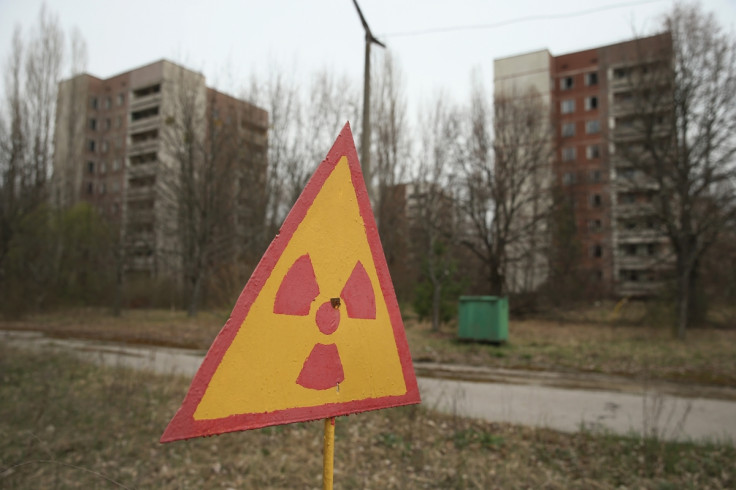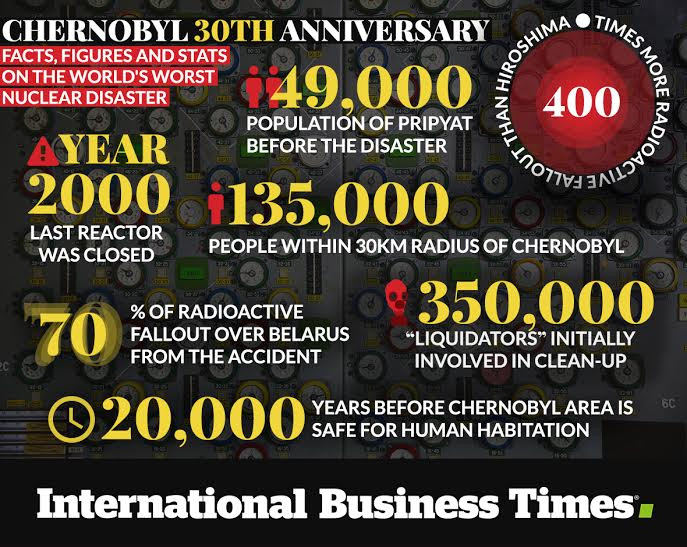Chernobyl 30th anniversary: Facts, figures and stats on the world's worst nuclear disaster

Thirty years ago, the fourth reactor at the Chernobyl nuclear power plant in Ukraine exploded, sending huge amounts of radioactive material into the atmosphere. A cloud carried radioactive caesium, strontium and plutonium over Ukraine, Belarus, Russia and Europe, depositing the hazardous material over homes and fields in one of the worst nuclear accidents in history.
Key facts
Chernobyl nuclear power station is located around 80 miles (130km) north of Kiev, Ukraine, and around 12 miles (12km) south of the Belarusian border. Construction on the Chernobyl nuclear power plant began in 1970.
The station itself consisted of four reactors which, combined, produced around 10 percent of Ukraine's electricity at the time of the accident. The reactors were of the RMBK-1000 design, a type of graphite-moderated reactor made by the-then Soviet Union.
Following the disaster in 1986, around 350,000 "liquidators" – made up of the army, plant staff, fire services and more – were initially involved in the clean-up operation after the accident, according to the World Health Organisation; around 240,000 of these workers received the highest radiation doses. The WHO further states that the number of registered liquidators later rose to 600,000.
The accident occurred during a test on the fourth reactor, which was conducted in order to find out whether the turbines could produce enough energy to keep the coolant pumps running if power was lost.
The accident released approximately 400 times more radioactive fallout than that of the atomic bomb dropped on Hiroshima; Japan, in 1945, according to the International Atomic Energy Agency (IAEA).
Radioactive isotopes, such as caesium-137, iodine-131 and strontium-90, were released into the air. Belarus received 70% of the fallout from Chernobyl, which contaminated one fifth of the country's land used for agriculture.

Severe radiation poisoning had killed 28 Chernobyl workers within four months of the accident, according to the United States Nuclear Regulatory Commission.
There has also been a significant increase in cases of thyroid cancer among people who were children and adolescents living in the most contaminated areas of Belarus, Ukraine and Russia at the time of the accident, the World Health Organisation also states.
The evacuation of the town of Pripyat began on 27 April, by which time residents had already begun to complain of sickness and feeling unwell. No reports or details regarding the accident were released until the third day after the reactor exploded.
© Copyright IBTimes 2025. All rights reserved.






















